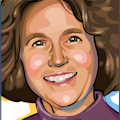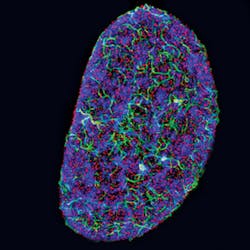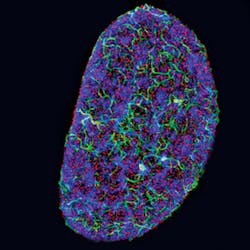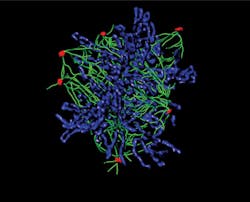BIOPHOTONICS RESEARCH FUNDING: Flexible funding options for biophotonics
One potential answer to reduced federal science funding: private foundation backing. The landscape is changing in terms of private financial support, but because biophotonics is seen as a transformative, up-and-coming area, the future looks bright.
With tighter federal science budgets, it's easy to understand why researchers get frustrated. Fewer dollars mean grant proposals must align with federal agency research objectives to have a shot at funding. However, private foundation support offers an important source of flexible funding for transformative research like biophotonics.
Historically, the Whitaker Foundation stands out as a key private player in promoting biomedical engineering (BME) and, in turn, biophotonics. With the foundation's support, BME departments grew from 12 in 1975 to 75 in 2005. As BME departments grew, they provided a fertile environment for interdisciplinary collaboration. Whitaker funding, for instance, assisted Rebecca Richards-Kortum at Rice University in her research to create new optical technologies for early detection of cervical cancer. Her work has expanded to include a range of optical imaging and spectroscopy tools to address challenges facing developing nations. Although the Whitaker Foundation closed its doors in 2005, a number of other foundations continue to support biomedical research, among them the Arnold and Mabel Beckman Foundation, the Wallace Coulter Foundation, and the Waitt Foundation.
Early support for bio-optics
The Beckman Foundation's support is well-known in the biophotonics community, with key institutes at the University of California, Irvine; CalTech; and the University of Illinois Urbana-Champaign. The Beckman Laser Institute (BLI) at UC Irvine got its start in 1982 when Arnold Beckman and Michael Berns conceived of an interdisciplinary center focused on developing optical technologies for use in the life sciences and medicine. Four years later, BLI welcomed its first researchers and has since grown to support 22 faculty members and 150 staff, research fellows and students.
BLI supports a range of biophotonics research, including the Laser Microbeam and Medical program (LAMMP), the Cellular Biophotonics Laboratory, the Diffuse Optical Spectroscopy and Imaging Laboratory, and the Laboratory for Functional Imaging and Spectroscopy of Superficial Tissues. Leveraging their position at BLI, these programs also receive federal support through the National Institutes of Health. In May 2013, the LAMMP received a $5.9 million, five-year grant from the National Institute of Biomedical Imaging and Bioengineering. This was the seventh renewal of LAMMP spanning 33 years, making LAMMP one of the longest running biophotonics programs in the U.S.
In his summer newsletter column, Berns notes that next year the formal relationship between BLI and UC Irvine will end. Over the past 30 years, the foundation has provided $15 million in ongoing support for research and about $1 million in equipment.
Translating research to commercial products
The Coulter Foundation takes a slightly different approach in their support of biomedical researchers. Through the Coulter Translational Research Partnership in Biomedical Engineering (CTRP), the foundation assists universities in translating promising research from the lab to clinical practice. When the program began in 2005, 10 universities were selected as inaugural participants. Since that time, the foundation has added six more universities to the program.
Each school receives $1 million annually. The schools distribute the funds through their own oversight committees composed of the BME department chair, clinicians at the university's medical school, the university's tech transfer specialists, industry representatives, and venture capitalists. The committees are fairly autonomous, choosing which projects to fund, but adhering to Coulter's desire to support projects that have a strong chance of commercialization.
"The Coulter strategy is risk reduction," says Wayne Barlin, Coulter Foundation general counsel. "The committees consider if the projects are interesting to venture capital and the business community." While this approach may seem limiting, it remains true to Coulter's goal of commercializing promising research. If a project has the necessary intellectual property in place, can survive the regulatory gauntlet, and has a likely shot at widespread acceptance in the clinical community its chance of commercial success increases tremendously.
As one of the original 10 CTRP recipients, Stanford University has funded over 45 projects since the program started in 2006. From those projects 16 companies formed, generating follow-on financing greater than 30 times the original grant amounts provided by Coulter. In addition, nine licenses were generated. "The Coulter Foundation is unique because it's trying to address the gap between completed basic research and getting it out into the world," explains Norbert Pelc, chair of Stanford's BME department. "Public funding doesn't traditionally support [translational research]."
Pelc also notes that while the Coulter funding provides flexibility in supporting projects because "the decision is local," it can also present a challenge. "Because the intent is to fund translational work, we need to determine if there is a market need and what the competitive landscape looks like. We're not funding basic science for its own sake."
A pledge for the future
The Waitt Foundation is one of the newest private players supporting bio-optics research. In 2008, a $20 million challenge grant from Gateway computer founder Ted Waitt to the Salk Institute established the Waitt Advanced Biophotonics Center (WABC, La Jolla, CA). The terms of the grant also established an aggressive funding model: the institute had to raise $20 million in new funding.
The pledge helped build a strong microscopy core facility so that when the WABC opened its doors in 2010, an eight-instrument imaging core facility was ready for use. That core included fluorescence, confocal, total internal reflection fluorescence (TIRF), two-photon, and transmission electron microscopes. Over the next two years, the core facility added five new instruments to strengthen its confocal and live-cell imaging and scanning electron microscopy capabilities. To image beyond the diffraction limit, the WABC added a system that combines two super-resolution techniques: structured illumination microscopy (SIM) and photoactivated localization microscopy (PALM). In 2013, the center purchased laser capture microdissection equipment and upgraded its transmission electron microscope to image cryogenically preserved samples.
"The Waitt pledge has helped us transform the science at the institute and establish connections with neighboring institutes such as Scripps," says WABC Director Martin Hetzer. Leveraging the core facility, the WBC has generated $15 million in additional funding from NIH and other private foundations and endowments as well as $17 million in competitive research grants for 2012-2013. Over 350 researchers from 40 faculty labs at Salk and 10 labs at local academic institutions on San Diego's Torrey Pines Mesa log roughly 25,000 hours of imaging across the various microscope systems annually.
Because the science can change quickly, requiring hiring in a "hot" area and new pieces of equipment, the real challenge with the WBC is maintaining and expanding the core facility Hetzer says. Donors that support these needs are typically individuals who understand the Salk Institute's objectives and know what it takes to run a core facility.
Communicating about WABC research and why it's transformative also helps strengthen relationships with donors and potential donors. The WABC hosts dinners and sponsors a biophotonics symposium to encourage interactions between the center and representatives of the local and national business communities.
Sharing the WABC's strengths with the wider community keeps Hetzer and his colleagues upbeat about the future. "We never forget why we do what we do," he says. "Biophotonics is a transformative area whose heyday is ahead."
Aggressively embracing that future requires a commitment from both private and public funding organizations. As Stanford's Pelc notes, "Each has its place. It's important for society to continue to invest in basic research, but there is an important role for private funding as well."
About the Author



